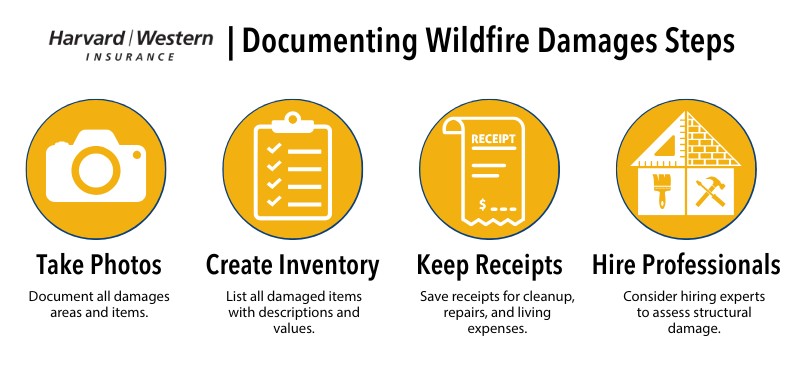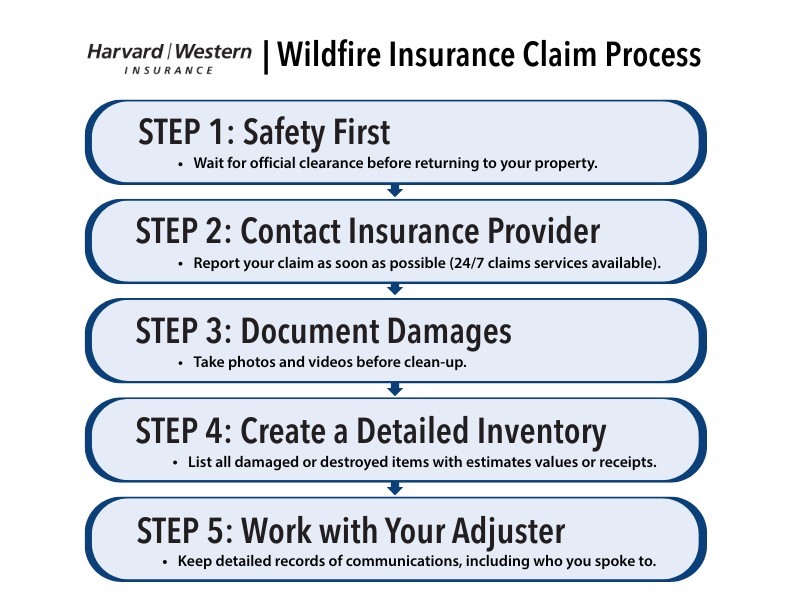
Wildfire Recovery: Getting Started on Your Insurance Claim
Wildfires can devastate homes and communities, leaving homeowners to navigate the complex process of insurance claims. As these natural disasters become more frequent, understanding your wildfire insurance coverage is crucial.
Canadian property and casualty insurers are once again facing the possibility of a wildfire season that is higher than average.
The escalating crisis in northern Saskatchewan, where over 5,500 people have been evacuated from communities, including Pelican Narrows and Denare Beach, has put tremendous pressure on the insurance industry in 2025.
Current Wildfire Situation in Saskatchewan
“We have not seen a fire season with as much impact and activity in the last couple of decades,” said Steve Roberts, vice-president of operations for the Saskatchewan Public Safety Agency (SPSA).
The Saskatchewan Public Safety Agency reports that as of late May 2025, there were 19 active wildfires across the province, with nine of them listed as not contained. Communities like East Trout Lake have suffered “substantial loss” with dozens of cabins and homes destroyed, as shown by drone footage revealing the charred remains of structures.
For those at Candle Lake, which is under pre-alert for evacuation, cabin owners are taking desperate measures. Some residents have been packing up their valuables and moving them to safer locations.
“We’ve pretty much resigned that sometime in the next few days to a few weeks, it’s a high likelihood none of this will be here,” he said. “We’ll be staying here as long as we can, but not going to push it to stupidity either.” – Candle Lake resident D. Sawatzky
The harrowing evacuation routes have added to the stress of those fleeing the fires. Some residents who left Pelican Narrows described being blocked by road closures due to wildfires:
“So we were blocked that way, and then we tried to turn back… and it was on fire too. So we were blocked the same, both ways.” – R. Ballantyne
These wildfires, combined with other severe weather events earlier this year, suggest that 2025 could exceed previous years’ natural catastrophe damages.
You need to know how to protect your property and financial interests when facing the aftermath of a forest fire. Whether you’re dealing with a current claim or want to be ready for future risks, we hope this article information will help you confidently navigate the insurance landscape.
Understanding Your Wildfire Insurance Coverage
To protect your home and financial interests in fire-prone areas, you need to grasp the essentials of wildfire insurance coverage. Yes, both home and business insurance policies generally cover damage caused by fires, including those resulting from forest fires. Remember, do not attempt to enter or clean your property after fire damage until it has been declared safe by emergency officials.
Types of Coverage
Your home or even seasonal home, such as cabins and cottages, includes insurance that typically covers damage caused by fire. This coverage also extends to other structures on your property, as well as personal belongings.
It’s important to note that “comprehensive” or “all perils” Saskatchewan auto insurance policies also cover your vehicle for fire damage. If any of your vehicles sustain damage from a wildfire, and your vehicle is registered in Saskatchewan, the plate insurance will provide coverage for the necessary repairs. However, you will be responsible for paying a deductible of $700.
On the other hand, if you have our Saskatchewan Auto Pak comprehensive coverage, it will cover the cost of repairs for your vehicles in the case of damage caused by a wildfire or lightning, and you will not be required to pay a deductible.
Policy Limits
Review your policy limits to ensure they adequately cover the full replacement cost of your home and belongings. If you’re forced to evacuate due to a mandatory order, check if your policy covers Mass Evacuation. This valuable coverage provides financial assistance for your living expenses, such as hotel accommodations, food, and gas, in the event of an emergency evacuation mandated by a public authority, including municipal or government authorities.
Many insurers provide similar coverage; be sure to ask your advisor to outline this protection for your policy, as coverage wording may vary. The time duration to use this coverage may also differ between insurers, so when filing a claim, be sure to review the limitations with your adjuster.
Exclusions
Wildfire insurance policies may have exclusions for certain types of damage or circumstances. For instance, some policies might not cover damage caused by earth movement, including landslides or mudslides. Understanding these exclusions is crucial to avoid surprises when filing a claim.
Remember, insurance coverage differs from company to company, and your coverage can differ greatly from your friend’s. Maintain open communication with your broker to understand your specific coverage and any potential limitations.
Documenting Damage and Losses
To ensure a smooth claims process after a wildfire, you must document your losses thoroughly. This documentation serves as crucial evidence for your insurance provider and helps you receive fair compensation for your damaged property.

Creating a home inventory
A comprehensive home inventory is invaluable when filing a wildfire insurance claim. It’s best to create this inventory before disaster strikes, as it can be challenging to remember everything you owned after a traumatic event. To create your inventory:
- List all your belongings using a spreadsheet or a specialized home inventory app. Taking photos or videos of your home also helps.
- Include details such as item descriptions, quantities, ages, and costs.
- Store your inventory in a secure online location or off-site for easy access.
Remember to update your inventory regularly as you acquire or remove new items.
Keeping receipts
Maintaining a record of all expenses related to your wildfire loss is crucial:
- Keep all receipts for cleanup efforts and temporary living expenses.
- If possible, gather proofs of purchase for damaged or destroyed items.
- For high-value items like jewelry or technology equipment, providing documentation and appraisals is particularly important.
Don’t worry if you don’t have perfect records – insurers understand that some documentation may have been lost in the fire. Your claims adjuster will also provide declaration forms. The goal is to provide as much information as possible to support your claim and ensure you receive fair compensation for your losses.

Filing a Wildfire Insurance Claim
Contacting Your Insurer
When you’re ready to file a wildfire insurance claim, your first step is to get in touch with your insurance broker. Most insurance companies offer 24-hour claims services, so you can start the process immediately.
When you contact your advisor, be as detailed as possible about the circumstances and any subsequent damage. If your home is unfit to live in, ask about eligibility for Additional Living Expenses (ALE) coverage under your policy. ALE covers costs above your normal expenses, such as temporary accommodations or using a laundromat if your temporary housing lacks laundry facilities.
Ask for additional resources supplied for your specific insurer. For example, Wawanesa Insurance provides a detailed claims guide specifically tailored to wildfire damage and mass evacuation coverage.
In the face of a wildfire, timely and accurate information is crucial for your safety. It is imperative to closely follow the guidance of local civil authorities. Evacuation orders should be obeyed promptly, as these directives are based on expert assessments of the situation.
Once the immediate threat has passed, it is equally important to stay informed about conditions on the ground. Official updates will provide clear instructions on when it is safe to return to your home or property. Rushing back prematurely can pose significant risks to yourself and others.
Prevention Strategies and Resources
More resources from FireSmart™ Canada
Check out FireSmart Canada, a national program that helps Canadians increase neighbourhood resilience to wildfire and minimize negative impacts.
- Take their free one-hour course, FireSmart 101, to learn more about protecting your property.
What are effective strategies for:
1. Reducing wildfire risks?
Effective wildfire mitigation strategies include reducing flammable vegetation around your property, thinning tree canopies to prevent fires from spreading across treetops, and removing dead wood and debris.
2. Preparing for a possible evacuation?
Evacuation Preparation Checklist:
- Ensure that your house number is clearly visible.
- Move any flammable materials, such as stacks of firewood and propane tanks, at least 30 feet away from the foundation of your home and any outbuildings. Make sure that no items capable of catching fire are in contact with your house, deck, or porch.
- By keeping your grass cut to a height of less than 10 cm, you can slow down the spread of fire towards your home. Create a safety zone around your property by clearing brush within a 200-foot perimeter, removing dead ground cover and debris, and raking mulch at least five feet away from your house.
Stay Connected With Harvard Western
Thanks for reading our article; I hope you enjoyed this month’s wildfire insurance claims topic. Here are some more ways to access more insurance information and tips:
Visit our Blog/article page each month, where we publish various insurance articles and share information on specific industry products.
Learn more about Claims and visit our support page for comprehensive information.
Follow us on LinkedIn to stay up to date on the latest business insurance articles and follow our company updates.
Posted in Home & Tenant on May 29, 2025 by Hope Prost











